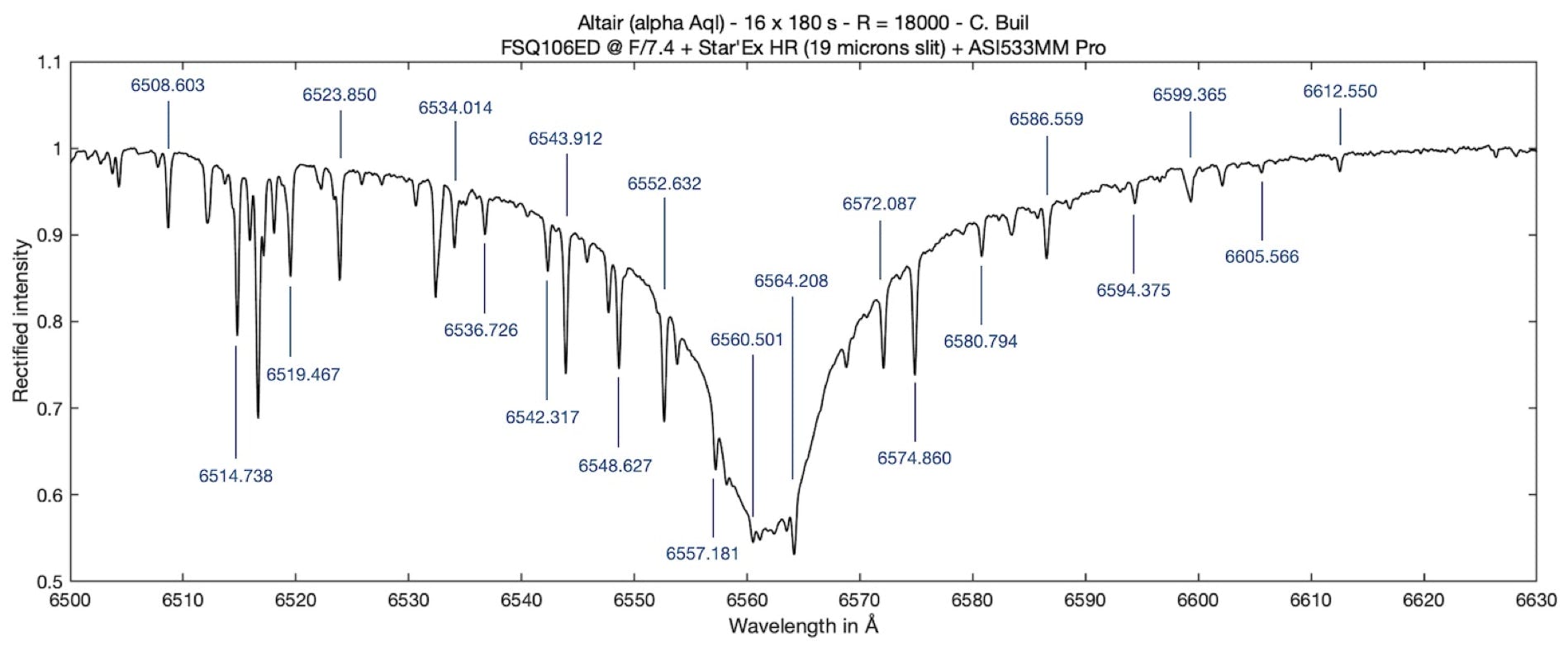specINTI & specINTI Editor
Appendix 3: Atlas of lines in spectral sources
This appendix gathers a set of spectra of spectral sources, to be consulted when you want to find the wavelength of a particular line from a calibration lamp or in a natural spectrum (the solar spectrum for example).
Hereafter, the link to an atlas of lines concerning a large number of discharge lamps, compiled by the author :
True color spectra (ASI294MC camera, Star'Ex 300 LR), from top to bottom, of a neon lamp, a neon and argon lamp (CONRAD lamp) and a compact fluorescent lamp:

Wavelengths of the lines of a neon lamp in the red region of the spectrum:
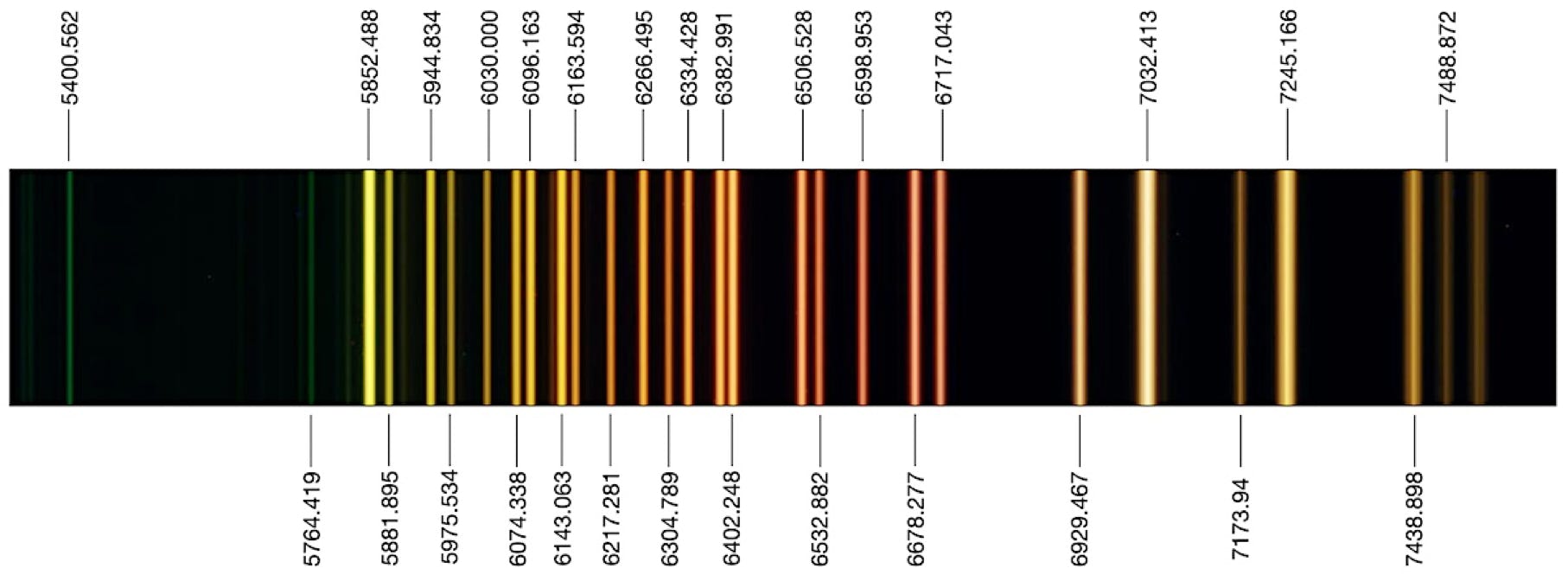
Wavelengths of the lines of a neon lamp BARTHELME 22340, available from CONRAD, in fact a mixture of neon and argon gas, ideal for the calibration of the visible spectrum in low resolution (here a spectrum of Star'Ex origin):
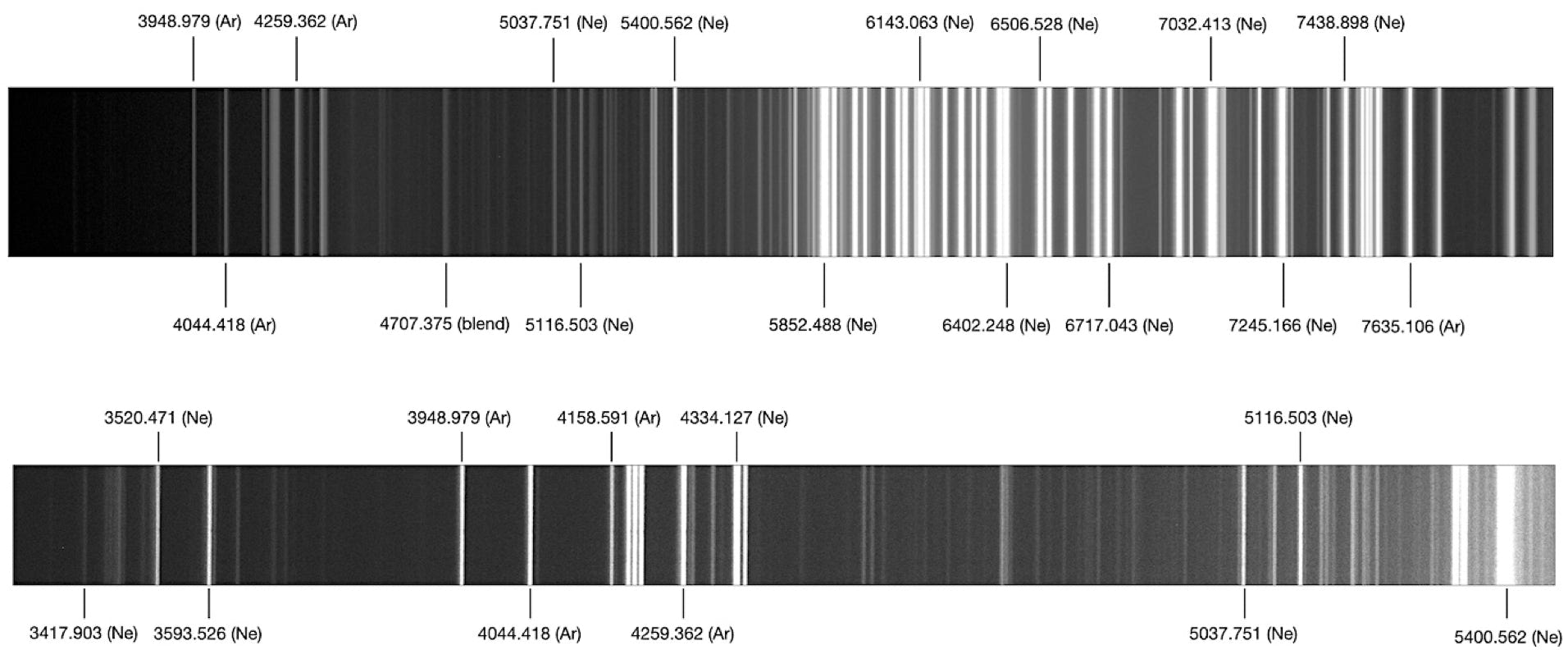
Wavelengths of lines of a neon lamp CONRAD in the infrared part of the spectrum (spectrum Star'Ex LR IR):

Deep infrared spectrum taken with Star Ex LR IR equipped with an optical fiber:

Blue and UV part of the spectrum of a compact fluorescent lamp, ideal for calibrating this region of the spectrum via mercury (Hg) lines (UVEX3 spectrum):


Spectrum in the blue region of a miniature firefly lamp containing xenon gas (Star'Ex spectrum):

Spectrum of the comet C/2022 E3 (yellow and red part) showing the lines of light pollution and oxygen in the upper atmosphere (data from a Star'Ex LR VIS). These lines, initially polluting, can help to calibrate the spectra of stars. The precise wavelengths of the forbidden oxygen lines are 5577.35, 6300.26 and 6363.86 A :
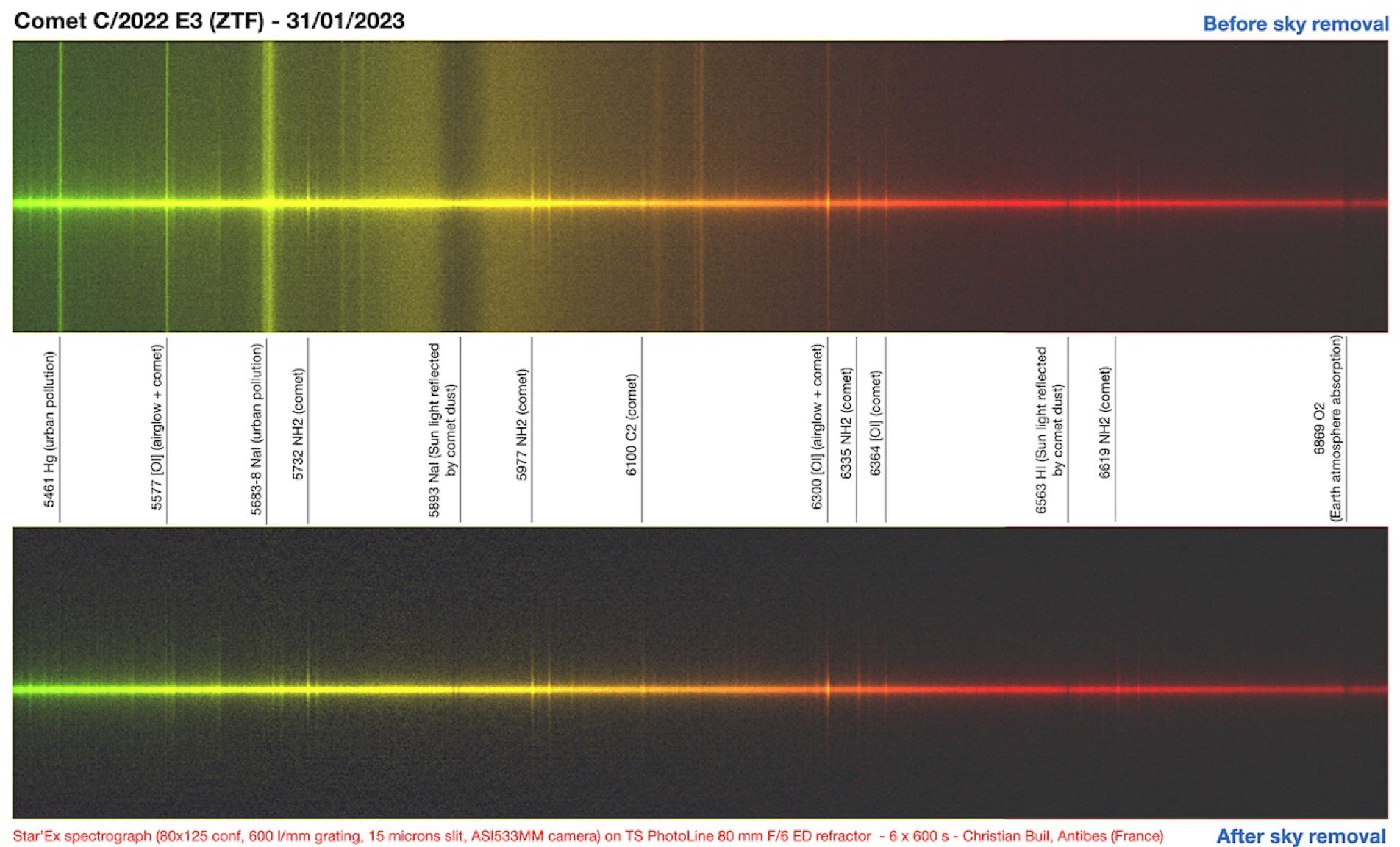
Spectrum of the twilight and pollution of the night sky of the city of Antibes (Star'Ex LR VIS). Exceptionally, this spectrum reveals the emission of lithium (Li) and potassium (K) in our own atmosphere (natural emission, 14/01/2023) :
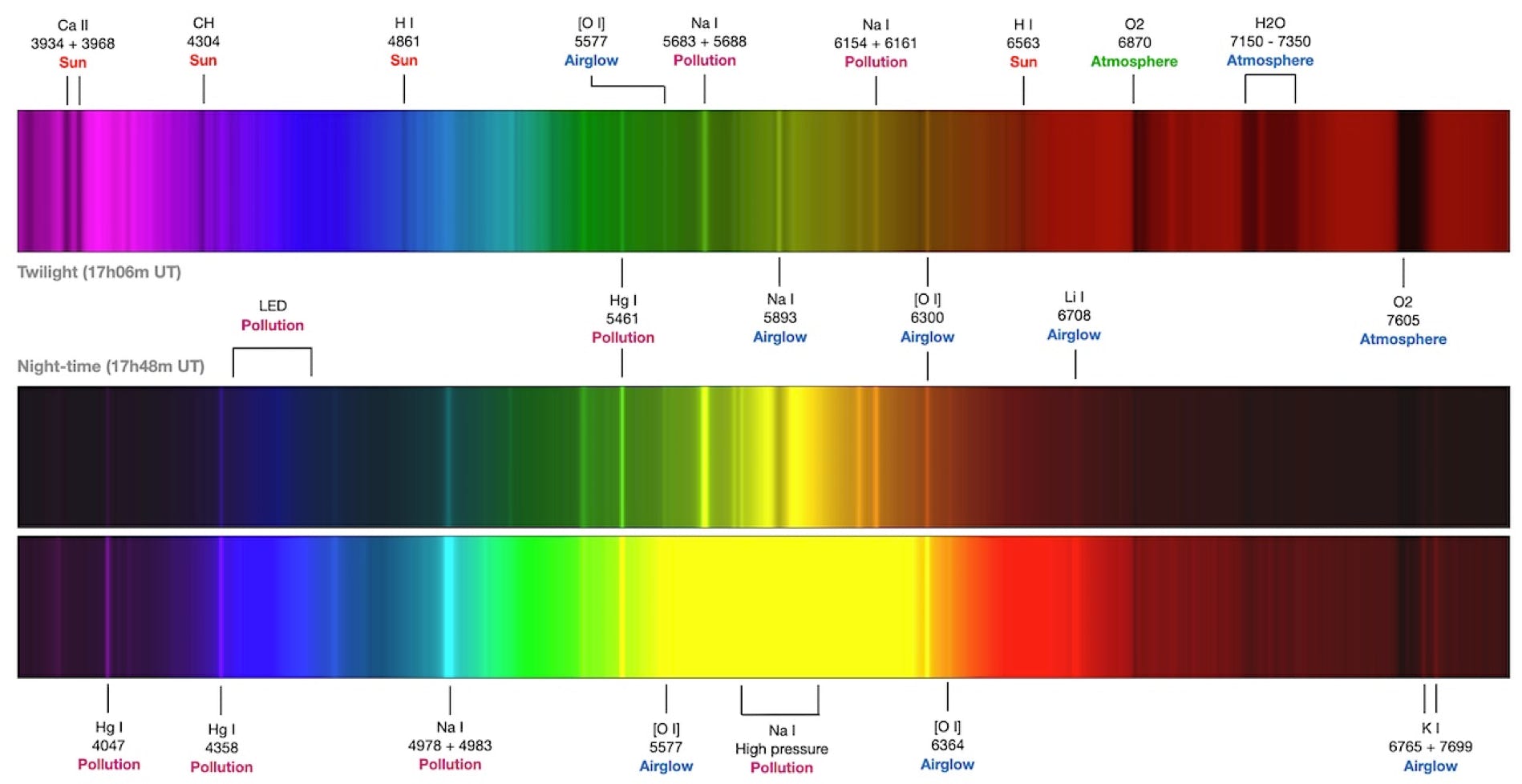
Star'Ex LR IR spectrum of the sky background in the infrared part :
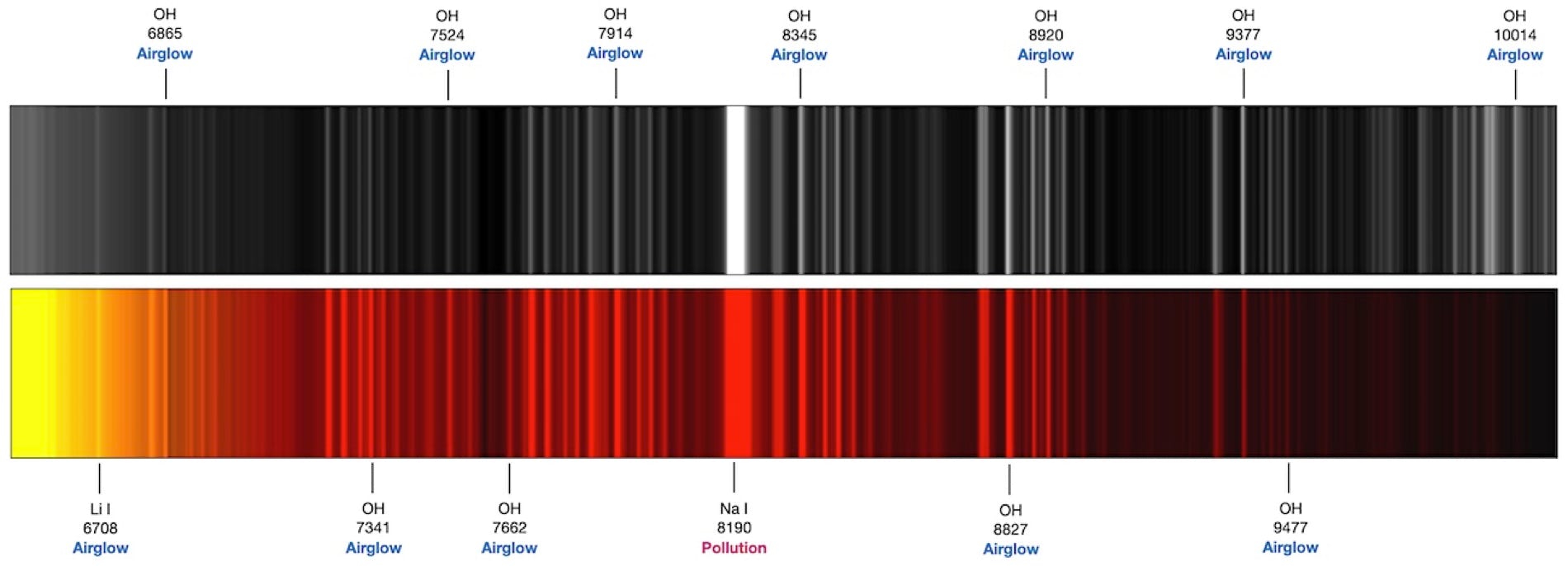
The Balmer series of hydrogen in the spectrum of a hot star, useful for calibrating the spectra of stars from their own spectra :
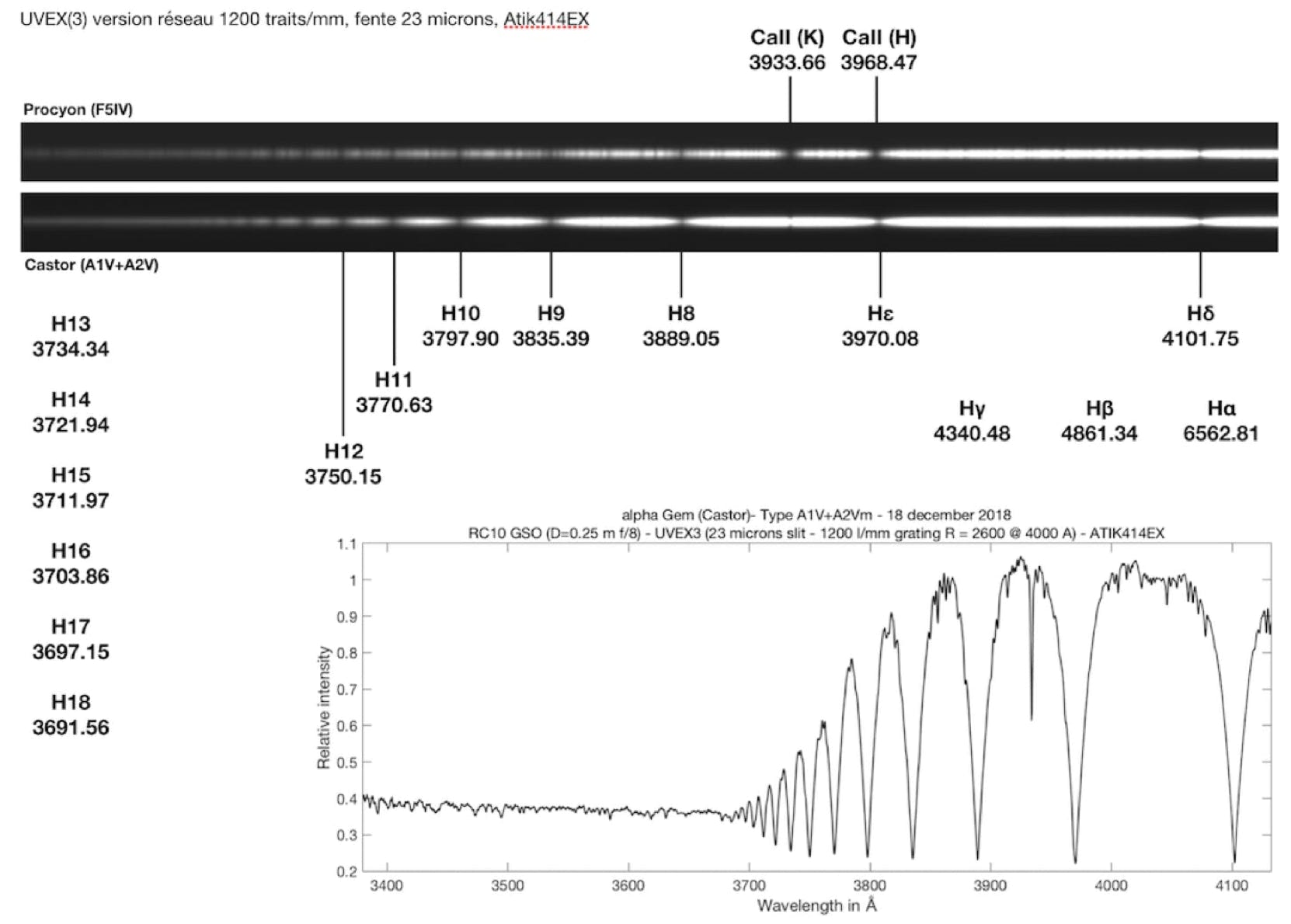
An ESP solar spectrum made by Olivier Garde (click on the image to enlarge) :
The H2O telluric lines in the vicinity of the Halpha line in a spectrum of the star Altair. The presence of these lines, whose contrast depends on the concentration of water vapor in our atmosphere, is very useful to calibrate the spectra taken from them and more generally to check the quality of the spectral calibration of spectra at high spectral resolution:
